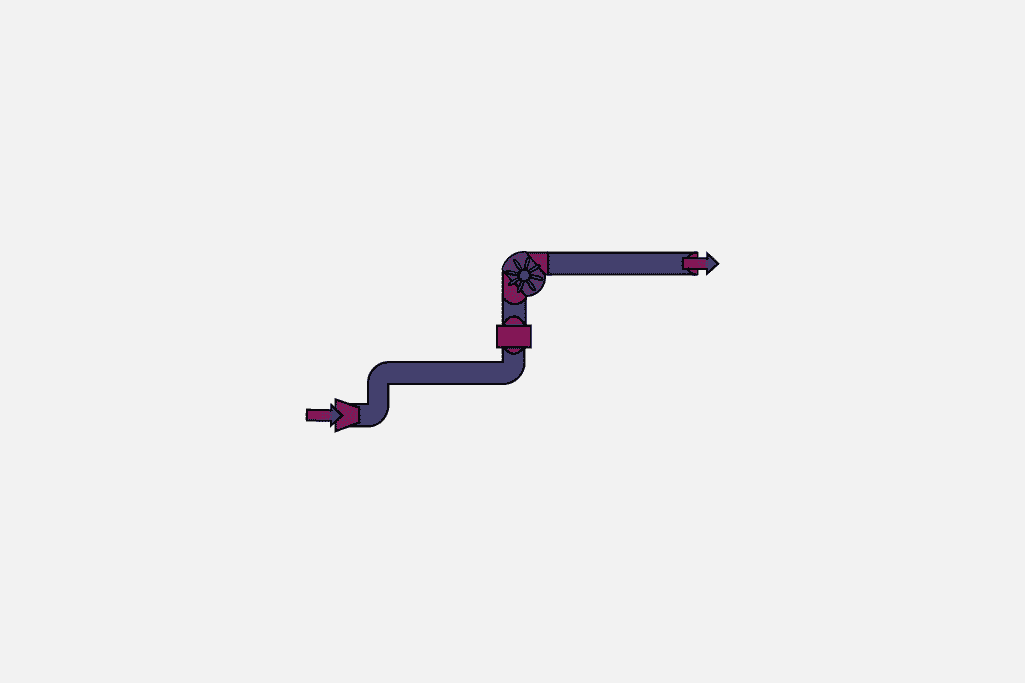Back in the early noughties, Sigma-HSE’s Technical and Operations Director was working in the UK’s Health and Safety Executive as a Process Safety Specialist Inspector and was drafting guidance for the warehousing industry.
This cumulated with the publication of HSG71 Chemical Warehousing: The Storage of Packaged Dangerous Substances, which is still freely available from the HSE website (www.hse.gov.uk). This guidance was aimed at anyone with the responsibility of storing dangerous substances, regardless of facility size, and applied to transit/distribution warehouses, open-air compounds and locations generally associated with a chemical production site or end-user.
Before drafting this guidance, he also surveyed of the warehousing and logistics industry. Throughout this time, the examination and analysis of multiple returned survey forms raised one significant issue – only 30% of respondents stated that they stored chemicals or dangerous substances. A subsequent question on the survey provided the reason for this. When asked what type of dangerous substances were stored, the replies stated pharmaceuticals, household and commercial consumer products, cosmetics, agrichemicals, food products etc. The wider logistics/warehousing industry did not recognise that such products can indeed contain or be classified as dangerous substances.
When looking into the products stored by many warehouses and logistics companies across the UK, items such as aerosol cans of hairspray were seen as simply consumer personal products, despite containing extremely flammable gases (LPG) as an aerosol propellant. Indeed, the individual aerosol cans were correctly labelled as containing a dangerous substance.
You only need to travel along the UK’s motorway network to appreciate the growth in extremely large warehousing and logistics operations throughout the country (which continues to expand significantly) and to understand how much potential there is for catastrophe if dangerous substances are not correctly understood, let alone stored or transported properly.
Introduction the DSEAR risk assessment and the warehousing/logistics industry
The Dangerous Substances and Explosive Atmospheres Regulations 2002, or DSEAR for short, ensures that businesses in the UK manage the risks connected to fires, explosions, and dangerous substances.
DSEAR puts duties on any UK location that controls a sizable amount of flammable gas, vapour, combustible dust, or powders that have the potential to create an explosive atmosphere.
Although there is a guide for the safe storage of packaged dangerous goods, there is, in fact, a set of DSEAR regulations with which the warehouse and logistics industry must comply.
DSEAR regulations deal with anything that can burst into flames or explode. This can include standardised materials that have already been classified as explosive or flammable i.e., liquids and flammable gases, but will also include a range of combustible dust and powders. Many of these combustible substances are not classified as dangerous, but can still be ignited, thus resulting in fire and explosion risks, examples include foodstuffs (flour, sugars etc) and other organic solids.
When present in potentially explosive atmospheres, substances that are utilised or stored at work that are dangerous could provide risks if suitable control measures aren’t put in place. To safeguard workers and the general public from explosions and fire, it is necessary to eliminate or control the risks posed by such harmful compounds to comply with DSEAR.
Dangerous substances can include combustible dust, flammable mists or vapours, or flammable gases. Typical manufacturing workplace examples include:
solvents
paints
flammable gases
dust from machining and sanding operations
pressurised gases
flammable liquids
Alongside materials, DSEAR regulations will apply to most activities that are undertaken throughout the warehousing and logistics industry (if materials are capable of combustion). The HSE state that a DSEAR may apply to any of the below activities:
storage of petrol as a fuel for cars, boats or horticultural machinery
handling and storage of waste dust in a range of industries
handling and storage of flammable wastes such as fuel oils
storage and display of flammable goods, such as paints, in shops
filling, storing and handling aerosols with flammable propellants such as LPG
transporting flammable substances in containers around a workplace
deliveries from road tankers, such as petrol and bulk powders
chemical manufacturing, processing and warehousing
the petrochemical industry, both onshore and offshore
handling, storage and use of gases under pressure
As with all UK health and safety legislation, the regulations require you to undertake a DSEAR risk assessment – this time focussed on those work activities handling substances capable of fire and explosion – and aim to prevent fires or explosions and to protect against the effects of fire and explosion and other emergencies involving dangerous substances.
Warehousing/logistics equipment
The primary focus of a DSEAR is to prevent fires and explosions. Essentially, this requires the prevention of a flammable atmosphere (a mixture of fuel and air capable of combustion). Where such flammable atmospheres are present on-site, then you must reduce the probability of potential ignition sources becoming realised.
As a result, mechanical or electrical equipment that has the potential to create an ignition source and is located within a flammable atmosphere generated under normal and expected malfunction operations needs to be special – this is often known as ATEX or Ex equipment.
Understanding the relationship between the DSEAR risk assessment and Hazardous Area Classification (HAC)
To ensure that all equipment present in specific zones are suitable, the determination of where on your site potential flammable atmospheres and their extent/size is done by undertaking a Hazardous Area Classification (HAC) study. This, in effect, results in the creation of specifically classified zones.
Once these zones are known, any mechanical or electrical equipment, as well as fixtures, fittings and tools present, must be removed or replaced by special ATEX or EX equipment.
However, a challenge that many companies that Sigma-HSE have worked with, as stated in a previous blog on how to avoid over-zoning in hazardous areas, is that when they undertake risk assessments, like DSEAR, they;
‘Err on the side of safety. Whilst this should not be deemed to be an issue, it may be overcautious as it can result in large hazardous areas being designated and, in some cases, a higher than necessary classification of zoning (i.e. Zone 1/21 instead of Zone 2/22) or by blanket zoning an entire area.’
It must be noted that when hazardous zones are updated then a risk assessment must be undertaken by a competent person. Therefore, by incorrectly assigning an area the wrong zone, a large amount of financial expense in terms of purchasing and maintaining ATEX or EX certified equipment can be caused.
Storage of potentially dangerous substances
Obviously, with most warehousing operations, packaged substances are simply stored and then transported. These materials, when in their individual containers, ensures that the generation of flammable atmospheres is not possible. But, if these materials are to be spilt during stock movement, or if said containers leak, the possibility of generating a flammable atmosphere increases drastically.
There have been many serious fires caused by the spillage of flammable materials during the movements of materials within warehouses. One very large fire that destroyed a whole warehousing structure occurred at a Boots site in Nottingham several years ago. In this incident, a forklift truck (not certified for use in flammable atmospheres) ran over a spilt aerosol can – the forklift truck was the source of ignition, and a small incipient fire very quickly grew to involve other combustible stock stored nearby.
Even if you are confident that you do not store or handle dangerous substances as stock, ancillary operations on site will utilise dangerous substances – and hence a DSEAR risk assessment including the Hazardous Area Classification is necessary. The presence of natural gas-powered boilers and heating systems; LPG or diesel-powered forklift trucks; even recharging electric forklift trucks (due to the generation of hydrogen gas) means that a DSEAR risk assessment is required.
DSEAR and Stock Insurance
The safe storage and supply of goods, alongside the safety of employees and business infrastructure i.e., warehouses, machinery and transport equipment are of huge importance to the success of your business. So, by complying with DSEAR regulations, you’re preventing potential disasters that could severely impact your operations.
We touched upon the topic of insurance for the manufacturing industry in a recent blog that you can read here. But a key finding was the fact that insurance companies are increasingly asking manufacturing businesses if they have undertaken a DSEAR risk assessment. As a result, we at Sigma-HSE have had multiple requests from these manufacturing businesses to undertake a DSEAR as requested by insurance companies.
As a result, warehousing and logistics businesses should start to think about the relationship between DSEAR and insurance. Although there isn’t a specific fire and explosion damage insurance policy that can be issued by insurance companies, there are other forms of insurance, that can pay to repair or replace items damaged due to a disaster caused by the above. So, by undertaking a DSEAR assessment, you can decrease insurance costs by confirming to insurance companies that you have applied a recognised safety regulation to your work environment.
Conclusion
Sigma-HSE’s recognised safety consultant services have years of experience aiding the manufacturing and logistics industry with the Dangerous Substances and Explosive Atmospheres Regulations compliance and have undertaken multiple DSEAR risk assessments throughout the processing industries for many years. Our consultancy team are on hand to discuss your requirements and will work with you to provide actionable safety solutions to help your business achieve compliance with DSEAR risk assessments and other explosive atmosphere regulations.
If you are unsure about the fire and explosion incidents involving dangerous substances handled at your facility, Sigma-HSE’s accredited testing laboratory can undertake all required testing, according to the relevant standards with a quick turnaround service.



